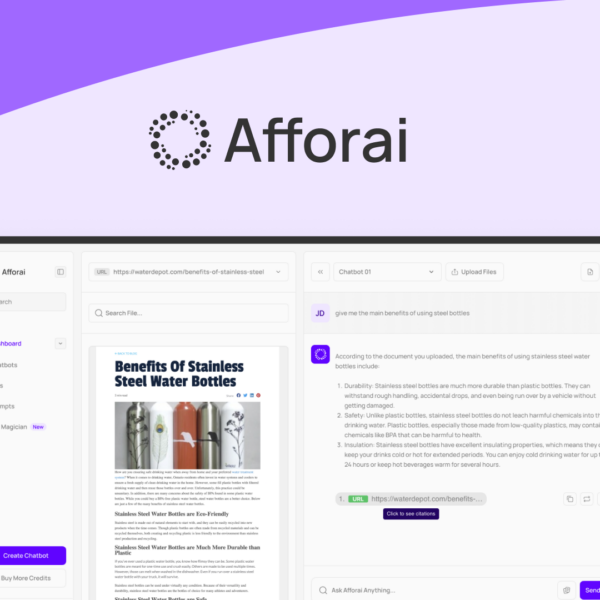A lead generation system is a structured approach to attracting and converting potential customers into leads using various strategies and tools. Implementing clear goals, understanding your target audience, and utilizing effective tools are crucial for maximizing success in lead generation.
A lead generation system is essential for any business looking to thrive in today’s market. This innovative solution helps streamline the process of attracting and converting potential customers, maximizing efficiency while driving sales. In this article, we’ll break down what a lead generation system is, delve into its benefits, and guide you on building your own system.
What is a Lead Generation System?
A lead generation system is a structured method aimed at attracting and converting potential customers into leads. This system employs various strategies, tools, and processes to collect information about prospective clients. By implementing a lead generation system, businesses can ensure they identify interested individuals, nurturing them through the sales funnel.
Key Components of a Lead Generation System
Essential elements of a lead generation system include:
- Landing Pages: These are web pages specifically designed to capture leads by offering valuable content or resources in exchange for contact information.
- Calls-to-Action (CTAs): CTAs encourage visitors to take a specific action, such as signing up for a newsletter or downloading a free guide.
- Email Marketing: This involves sending targeted emails to potential leads, keeping them engaged and informed about your offerings.
How It Works
The process starts by attracting traffic to your site, typically through content marketing, social media campaigns, or paid advertising. Once visitors land on your site, the lead generation system converts them into leads using various strategies, such as compelling CTAs and engaging content.
After collecting data, businesses can nurture leads by sending them relevant information, answering queries, and gradually building a relationship. The goal is to guide these leads towards making a purchase decision and ultimately converting them into paying customers.
Benefits of a Lead Generation System

A lead generation system offers numerous advantages that can significantly enhance a business’s ability to attract and convert customers. Incorporating this system can lead to higher efficiency, better targeting, and improved sales performance.
1. Increased Efficiency
One of the primary benefits of a lead generation system is increased efficiency. By automating the lead capture and nurturing processes, businesses can save time and allocate resources more effectively. This allows sales teams to focus on closing deals rather than spending excessive time on finding leads.
2. Better Targeting
With a structured lead generation system, businesses can better understand their target audience. By analyzing data collected from leads, companies can tailor their marketing strategies to meet the specific needs and preferences of potential customers. This targeted approach enhances conversion rates.
3. Enhanced Lead Tracking
A lead generation system provides valuable insights into the behavior and interactions of leads. This tracking allows businesses to identify which strategies are working and which need adjustments. By continuously optimizing the lead generation process, businesses can improve overall performance.
4. Improved Customer Relationships
Through consistent communication and relevant content, a lead generation system helps build relationships with potential customers. Nurturing leads through personalized messages and offers enhances trust and credibility, making prospects more likely to convert into paying customers.
5. Higher Return on Investment (ROI)
Ultimately, a well-implemented lead generation system can result in a higher return on investment. By focusing resources on effective strategies and better targeting, businesses can generate more qualified leads and increase their sales conversions, leading to improved profitability.
How to Build Your Own System
Building your own lead generation system can be a rewarding process that enhances your business’s ability to attract customers. Follow these steps to create an effective system tailored to your needs.
1. Define Your Goals
Before diving into the setup, it is crucial to define the specific goals of your lead generation system. Consider what you want to achieve, such as increasing contact lists, boosting sales, or enhancing customer engagement. Clear goals will help shape your strategy.
2. Identify Your Target Audience
Understand who your ideal customers are. Conduct market research to identify their demographics, interests, and behaviors. Knowing your audience enables you to tailor your messaging and offers, increasing the likelihood of conversion.
3. Choose the Right Tools
Select tools that suit your system’s needs. Consider options such as:
- CRM Software: Helps manage customer relationships and track leads.
- Email Marketing Platforms: Essential for nurturing leads through targeted email campaigns.
- Landing Page Builders: Create optimized landing pages to capture lead information effectively.
4. Create Compelling Content
Your content is key to attracting leads. Develop high-quality resources such as blogs, ebooks, webinars, and videos that provide value to your target audience. Use strong calls-to-action to drive engagement and prompt visitors to share their information.
5. Monitor and Optimize
After launching your lead generation system, it is important to continuously monitor its performance. Use analytics tools to track metrics like conversion rates, lead sources, and customer engagement. This data will help you optimize your strategies and improve results over time.
Tools for Effective Lead Generation

Utilizing the right tools is essential for creating an effective lead generation system. The following tools can enhance your ability to attract and convert leads successfully.
1. Customer Relationship Management (CRM) Software
A CRM system helps you manage customer interactions and store valuable data about leads. It allows you to track lead progress, monitor sales activities, and maintain communication logs, ensuring that no lead is overlooked.
2. Email Marketing Platforms
Email marketing remains one of the most effective tools for nurturing leads. Platforms like Mailchimp or Constant Contact enable you to segment your audience, automate campaigns, and send personalized messages that engage and convert your leads.
3. Landing Page Builders
Creating optimized landing pages is crucial for capturing leads. Tools like Unbounce and Leadpages allow you to design visually appealing pages that are tailored for specific campaigns, ensuring that your call-to-action is clear and compelling.
4. Social Media Management Tools
Social media platforms are powerful for generating leads. Tools like Hootsuite or Buffer help you schedule posts, track engagement, and analyze performance across various platforms, maximizing your outreach and lead capture potential.
5. Web Analytics Tools
Understanding how your visitors interact with your website is key to improving your lead generation strategies. Tools like Google Analytics provide insights into user behavior, helping you uncover which channels are most effective for driving leads.
6. Chatbots and Live Chat Software
Implementing chatbots or live chat features on your website can help engage visitors in real-time. Tools like Intercom or Drift can answer questions, guide users, and capture lead information instantly, enhancing the customer experience.
Common Mistakes to Avoid
When setting up a lead generation system, it’s easy to make mistakes that can hinder your success. Here are some common pitfalls to avoid:
1. Not Defining Clear Goals
Failing to establish specific, measurable goals can lead to a lack of direction in your lead generation efforts. Set clear objectives to guide your strategy and measure success.
2. Ignoring Your Target Audience
Skimping on audience research can result in ineffective lead generation strategies. Understand who your ideal customers are so that you can tailor your messaging and offers to resonate with them.
3. Overlooking Follow-Up
A common mistake is failing to follow up with leads promptly. Once potential customers express interest, it’s crucial to engage them quickly to nurture the relationship and increase conversion chances.
4. Relying Solely on One Channel
Limiting your lead generation efforts to just one marketing channel can restrict your reach. Diversify your strategies by incorporating various platforms like email, social media, and content marketing.
5. Neglecting to Test and Optimize
Many businesses launch their lead generation systems and forget about them. It’s essential to continually test different strategies, analyze the results, and optimize your approach to improve efficacy.
6. Providing Poor Quality Content
High-quality, valuable content is the backbone of successful lead generation. Focusing on quantity over quality can turn potential leads away. Invest in creating content that genuinely informs and engages your audience.
7. Failing to Nurture Leads
Once you capture leads, it’s crucial to nurture them through email campaigns or personalized outreach. Ignoring leads after initial contact can lead to missed opportunities for conversion.
In Summary: Building an Effective Lead Generation System
Creating a successful lead generation system is essential for any business looking to grow. By understanding your goals, knowing your audience, and using the right tools, you can attract and nurture leads efficiently.
Avoiding common mistakes, such as neglecting follow-up and delivering poor-quality content, is crucial for making the most of your efforts. Remember, regular testing and optimization can greatly enhance your results.
By following these guidelines, you can unlock the full potential of your lead generation system, leading to increased sales and business growth.
FAQ – Frequently Asked Questions About Lead Generation Systems
What is a lead generation system?
A lead generation system is a structured method that helps businesses attract and convert potential customers into leads through various strategies and tools.
Why is defining goals important for a lead generation system?
Clear goals guide your strategy and help measure success, ensuring your efforts are focused and effective.
How can I avoid common mistakes in lead generation?
Avoid common mistakes by defining your audience, following up promptly, testing strategies, and providing high-quality content.
What tools should I use for lead generation?
Tools like CRM software, email marketing platforms, landing page builders, and web analytics tools are essential for effective lead generation.
How do I nurture leads after capturing them?
You can nurture leads through personalized email campaigns, timely follow-ups, and providing valuable content that engages them further.
What role does content play in lead generation?
High-quality content attracts leads and keeps them engaged, making it vital for successful lead generation and conversion.




